Dhamdha Fort Durg : Dhamdha Fort is located in Durg district of Chhattisgarh state. Dhamdha Fort used to be the stronghold of Gaur kings. Dhamdha fort was known as Six Kori Six Agar Tariya Wala Garh.
Chhattisgarh state came into existence on 1 November 2000 after its separation from Madhya Pradesh. The ancient name of this state is Kaushal Rajya. This state is called the maternal birthplace of Lord Shri Ram, because it is believed that his mother Kaushalya Devi was from this state. She was called Kaushalya because she was from Kaushal state.
Chhattisgarh got its present name about 300 years ago during the reign of a tribe called the Gaur tribe. There are about 36 forts of Gaur kings in Chhattisgarh. These forts are called Garh due to which this state was called Chhattisgarh.
धमधा किला , दुर्ग छत्तीसगढ़ | Dhamdha Kila in Hindi , Durg, Chattisgarh
Gaud Kingdon – Dhamdha Fort
About 1100 years ago, the empire of Gauda kings spread over a large area of Central India till the 9th century, which also included some areas of present-day Madhya Pradesh, Andhra Pradesh, Maharashtra and Orissa. This combined area was called Gondwana.
After the Gaur kings, a large part of Gondwana had come under the control of Maratha king Bhonsle and some part under the Nizam of Hyderabad. During the British rule, this place was captured by the British. Dhamdha Fort of Chhattisgarh is located in this area. This historical fort was built by the Gaur kings.
Five Brothers
The Gaur kings of Dhamdha were called Panch Bhaiya Raja which was a zamindari of Ratanpur Raj. It is said that these five brothers used to fight in a special way in the war and defeated the enemy.
History – Dhamdha Fort
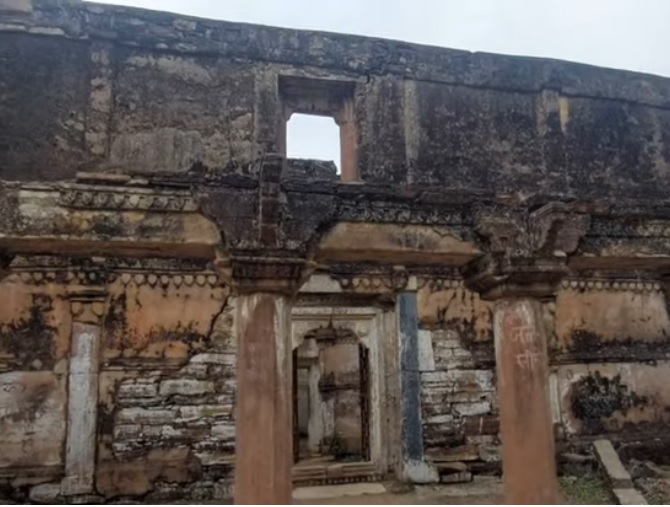
According to historians, the king of Vijayanagara in the south, impressed by the bravery of the Gaud brothers, had gifted Sarda Pargana to them. The Gaur brothers had impressed the king by controlling a mad elephant. At that time this fort, the grand temple and the main lion gate were in a very dilapidated state. At that time the Gaur brothers had made Dhamdha Fort their residence and established a village here. Gradually he increased his jurisdiction and started ruling there. At that time Dhamdha was considered a very important place in Ratanpur state.
Gauda kings later made Dhamdha their capital. Sarda Pargana was known by historians as Anjaya Garh for a long time. This Sarada Garh is today Dhamdha which the Gaud kings made their capital and ruled here for about 700 years. Even today its evidence and remains can be seen there.
Almost two floors of this fort are still underground. At the top we can see two floors which are now in ruins.
Architecture – Dhamdha Fort
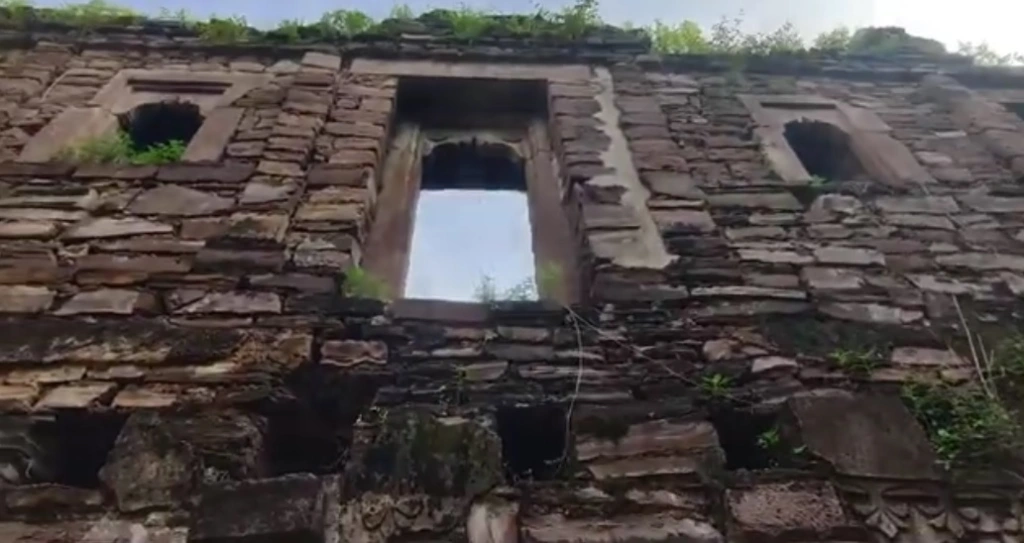
Dhamdha Fort was built by stones. Ancient forts and palaces were built by joining stones using clay and lime. Dhamdha Fort was also constructed in a similar manner. Even today, when we look at the remains of this fort, these stones are seen firmly connected.
126 Ponds – Dhamdha Fort
Dhamdha Fort is a special fort. This fort was considered an impregnable fort. This was because this fort was surrounded by big ponds on all sides and it was not easy to reach the fort without a boat. Dhamdha Fort was surrounded by 126 ponds, although today only a few of these ponds survive and most of the ponds have been destroyed by encroachment.
These ponds were built all around the Dhamdha Fort and these ponds were kept filled to the brim with water all the time. Crossing these ponds to reach the palace and attack was a very difficult task. Due to being surrounded by these 126 ponds, Dhamdha was called 6 Kori 6 Agar Taraiya i.e. the village of 126 ponds.
To keep the Dhamdha Fort safe, dangerous crocodiles were kept in these ponds so that if any enemy came here, he would become a victim of these crocodiles. The ponds built by the Gond kings were spread over an area of about 500 acres.
Special arrangements were made to fill these ponds with water, which surprises everyone even today. Today only 25 of these ponds remain. Water from Budha Narva i.e. Budha Nala was used to fill water in the ponds.
Boodha Narva – Dhamdha Fort
In this old Narva, water was supplied from fields 5 kilometers away, which is the case even today. Here the excess water from rain and fields used to reach a pond through a long canal which then reached the second, third and so on. The system made by the Gaur kings was on a scientific basis.
According to this arrangement, a long canal was made in which many trees were planted. Due to the elements present in the roots of the trees and the microorganisms found in them, water was purified and the same water was also used for cooking, drinking and other purposes. In this way the water level of these ponds also increased a lot. Due to which work was done both ways. The fort was also kept safe and water was supplied well.
Boodha Dev – Dhamdha Fort
The people here considered Lord Shiva as their idol and called him Budhadev in their language. After his name, the big drain used to fill the drains with water was called Budha Narva.
Sinh Dwar – Dhamdha Fort
Right in front of Mahamaya temple is Singhdwar which presents the ancient and glorious history of Dhamdha of Gond kings. It is constructed with sandstone and has statues of Lord Vishnu carved in the entrance. The entrance also displays symbols of the 10 incarnations of Lord Vishnu.
Boodha Dev Temple – Dhamdha Fort
Just behind the Mahamaya Temple, there is a temple called Budhadev Temple. A pavilion of 12 pillars made of stones was also built in this temple.
In Dhamdha Fort, holes were made in the walls which were not visible from outside and the outside view could be clearly seen from inside. These holes were made by the soldiers to protect the fort from the security point of view so that they could keep their weapons from there and keep an eye on the outside and any enemy coming from outside could push those soldiers further inside. Couldn’t see.
Dhamdha – Mahamaya Temple
Trimurti Mahamaya Temple of Dhamdha is very famous. It is said that when the tenth king of Gaur dynasty, Daswant Singh, ascended the throne at a very young age, his mother used to support him in ruling the kingdom. According to the popular legend here, the queen had a dream one night and saw Mahakali Devi in her dream and as per her advice, she got a special statue excavated near the lion gate of the fort.
This idol was from mouth to navel. In this way, the Queen had two more dreams and as per the instructions given in the dream, she got two different statues excavated at different places. In this way, the idols of all three goddesses were installed in the temple which is called the famous Trimurti Mahamaya Temple of Dhamdha. Since then this Mahamaya temple holds great importance for the devotees.
The meeting of the three goddesses Mahakali, Mahalakshmi and Maa Saraswati together in the same womb is a unique thing in itself which is not seen anywhere else. All these idols exist together in the form of a body only in the Vaishno Devi temple. Whereas here they are seen in physical form, they were established by Gaud Raja 425 years ago.
How to reach Dhamdha
To visit Dhamdha Fort, one can travel a distance of about 30 kilometers by road from Durg district of Chhattisgarh. The nearest airport here is Swami Vivekananda Airport in Raipur, the capital of Chhattisgarh. The distance from Raipur to Dhamdha is approximately 65 kilometers.
The nearest railway station to reach Dhandha is Durg.

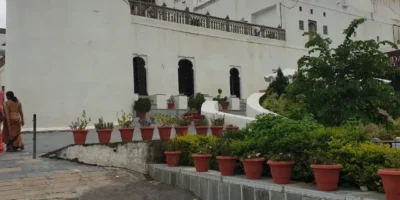
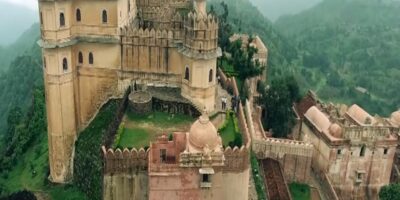
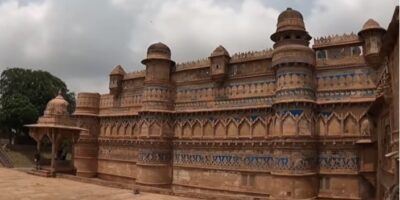
Leave a Reply